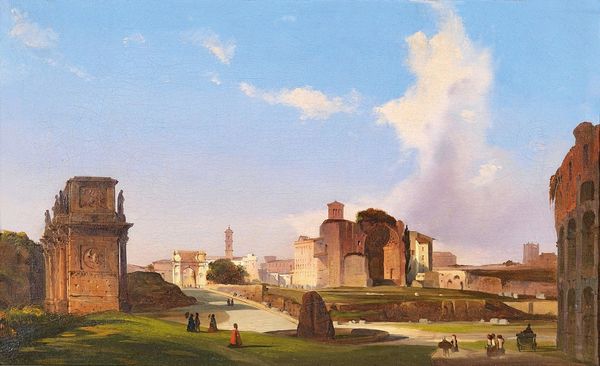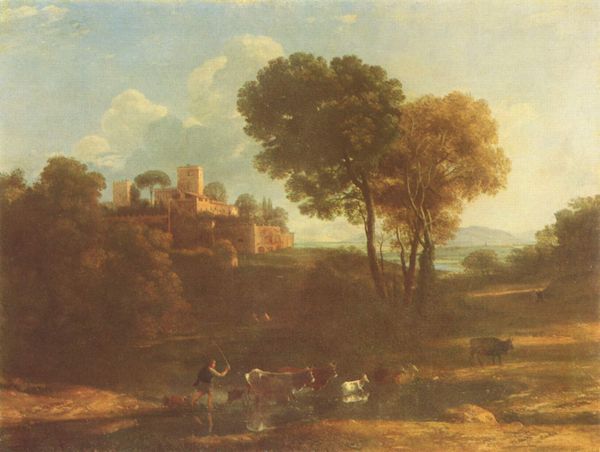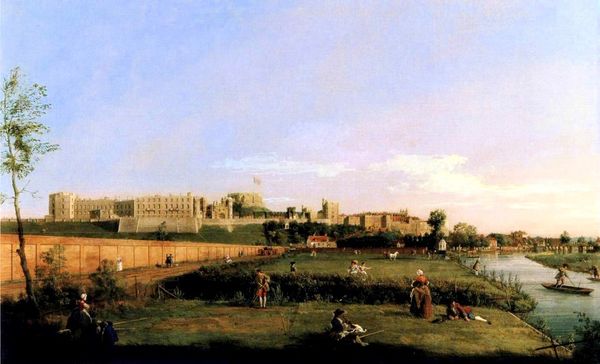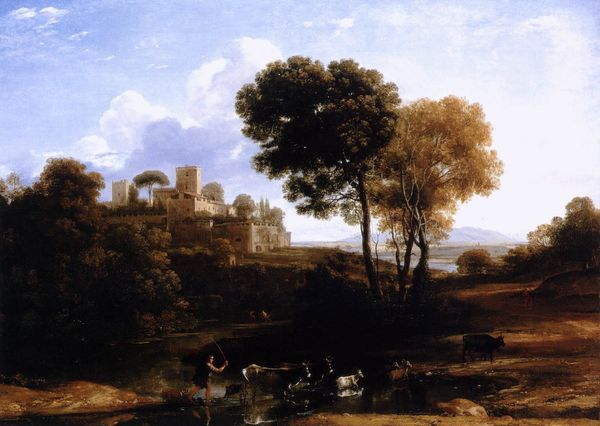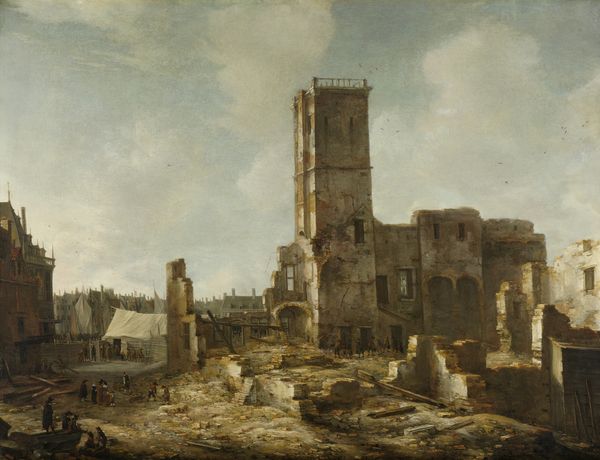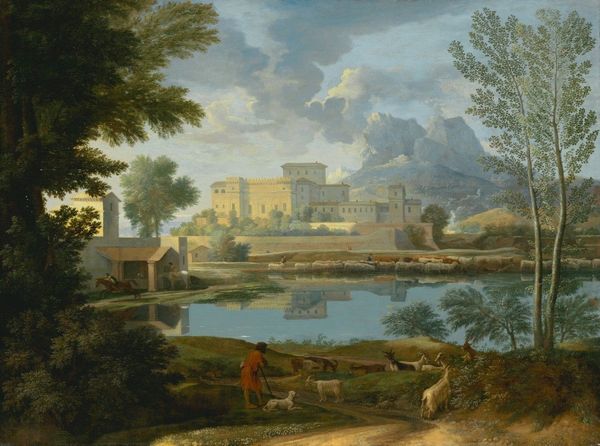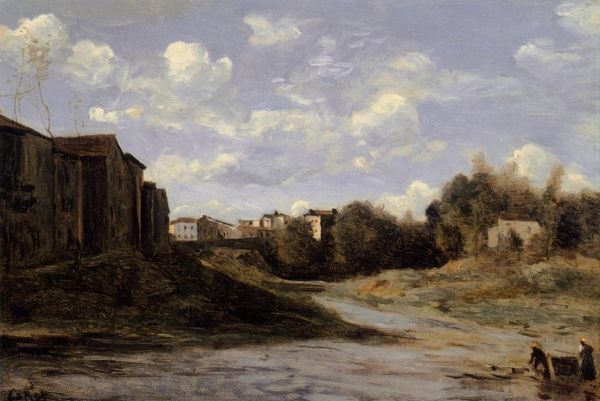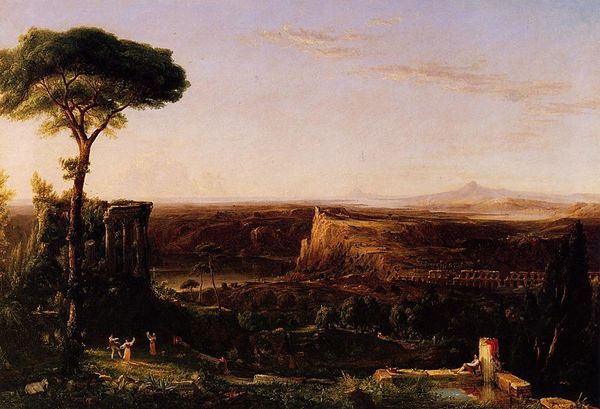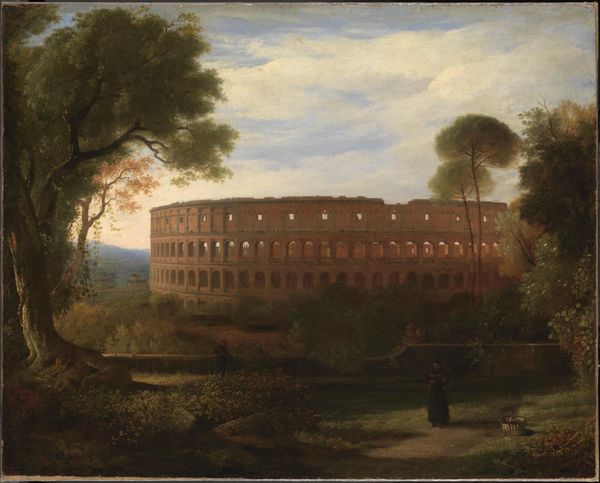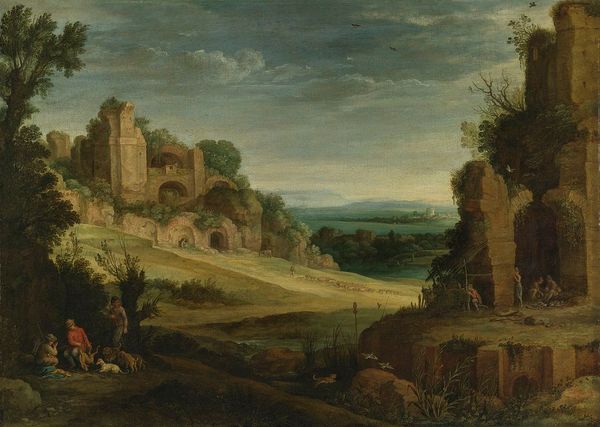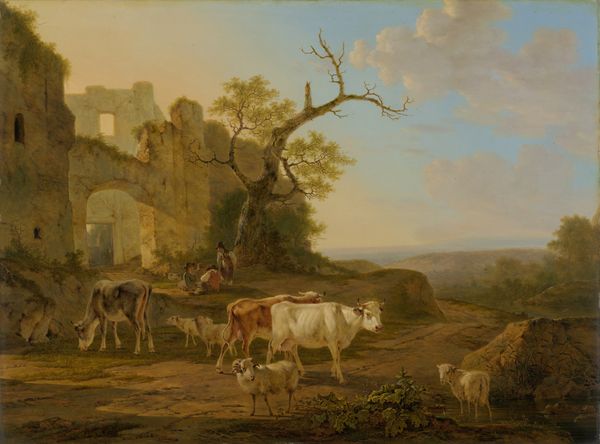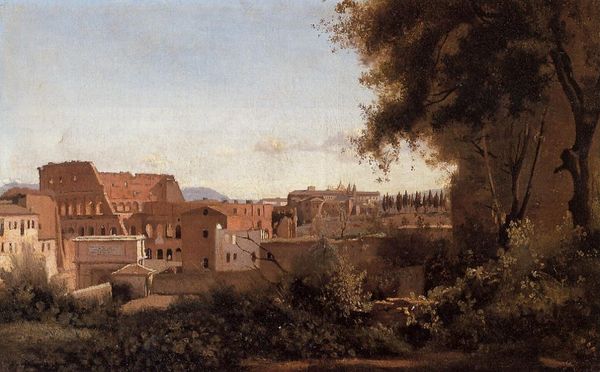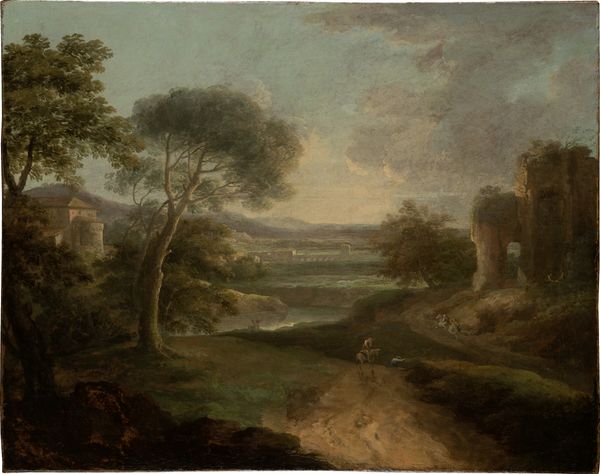
Dimensions: support: 527 x 648 mm
Copyright: CC-BY-NC-ND 4.0 DEED, Photo: Tate
Curator: Sir Charles Lock Eastlake painted "The Colosseum from the Campo Vaccino." Look how the artist positions the viewer at a remove, amidst foliage and grazing sheep. What's your first take? Editor: It feels melancholic. The grandeur of the Colosseum is undeniable, but it’s presented as a ruin, almost overgrown, a fragment of a forgotten, brutal empire. Curator: Indeed, and the placement of figures within the frame—the shepherd, the sheep—emphasizes a sense of pastoral calm juxtaposed with the Colosseum's bloody history. This tension speaks to the complexities of Roman identity. Editor: Yes, it feels like a commentary on power, doesn't it? The sheep are almost mocking this symbol of ancient authority. The Colosseum, a place of violence, is now just a backdrop for peaceful grazing. Curator: Eastlake, as a key figure in the National Gallery's formation, was deeply invested in ideas of nationhood and historical narrative. His vision of Rome surely was intended to provoke reflections on Britain's own imperial aspirations. Editor: It makes you wonder about the stories we choose to tell, doesn't it? The Colosseum represents a very specific, often glorified, version of the past. I am intrigued by the artist's subtle critique. Curator: A powerful demonstration of how a landscape painting can be imbued with social and political commentary. Editor: Precisely. A beautiful, yet haunting, reminder of the impermanence of power.
Comments
tate 7 months ago
⋮
http://www.tate.org.uk/art/artworks/eastlake-the-colosseum-from-the-campo-vaccino-t00665
Join the conversation
Join millions of artists and users on Artera today and experience the ultimate creative platform.
tate 7 months ago
⋮
Eastlake was one of the most earnest of the younger artists who adopted neo-classicism in the 1820s. He painted subjects from classical history, and in Rome produced a number of landscape compositions depicting ancient ruins. Some of these continue the tradition of Thomas Jones's immediate open-air studies. Others incorporate crumbling classical buildings in formal designs dominated by architectural geometry. This is, at one level, a simple topographical view of the type made by many visitors to Rome; at another it is a refined meditation on past grandeur and its inevitable decline. Gallery label, August 2004
